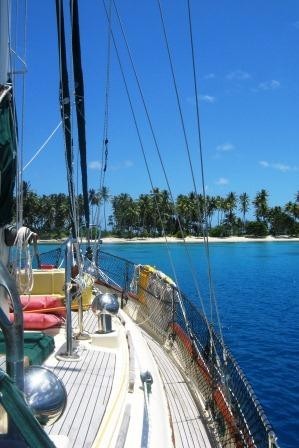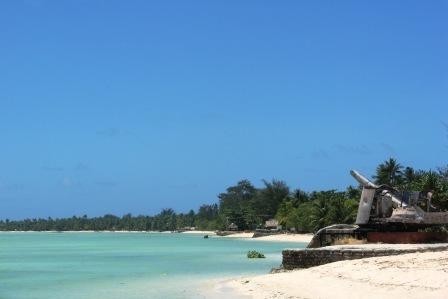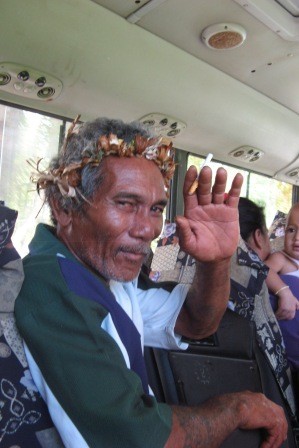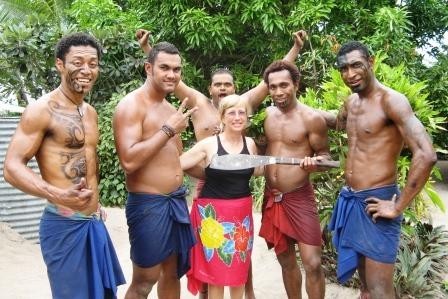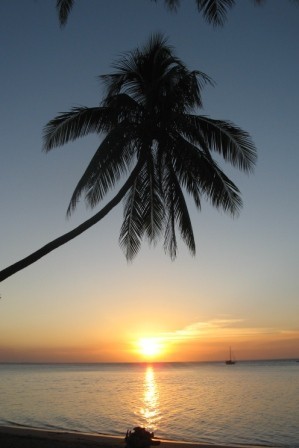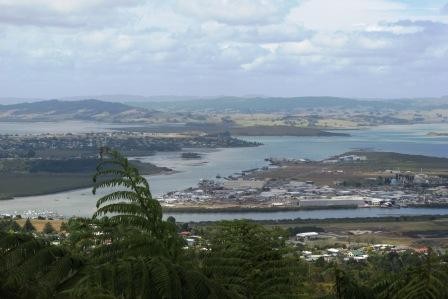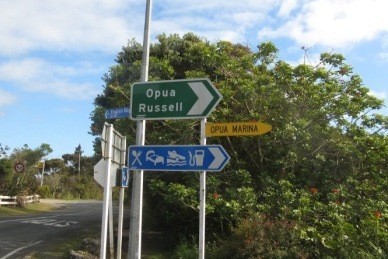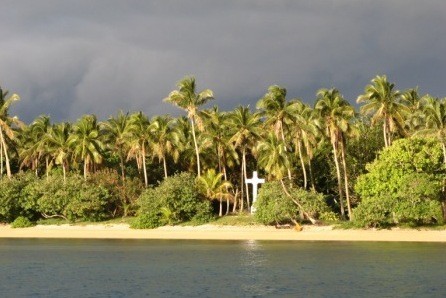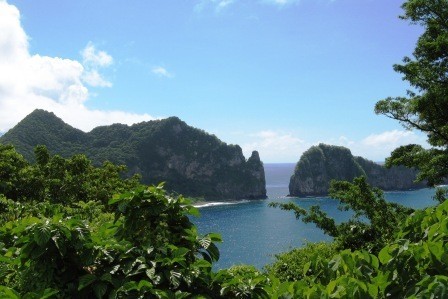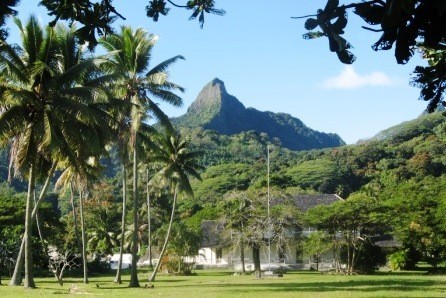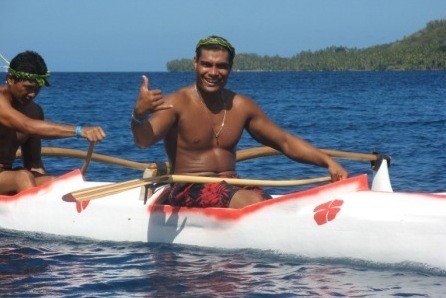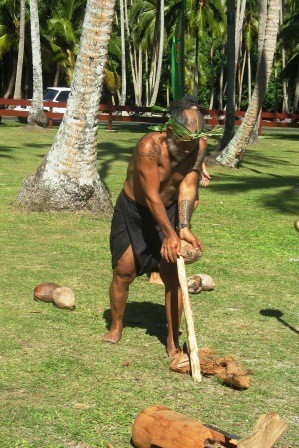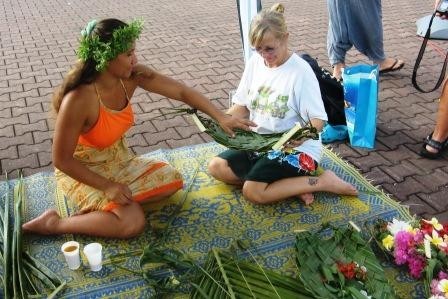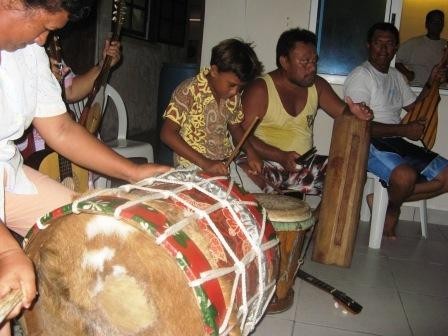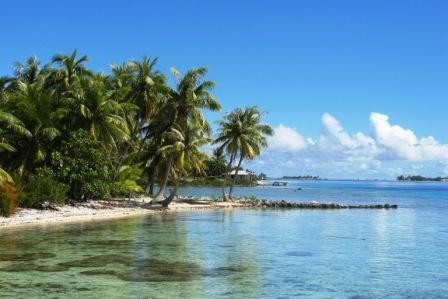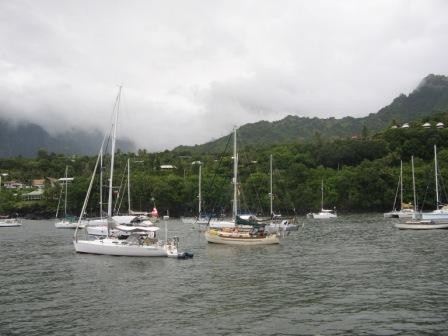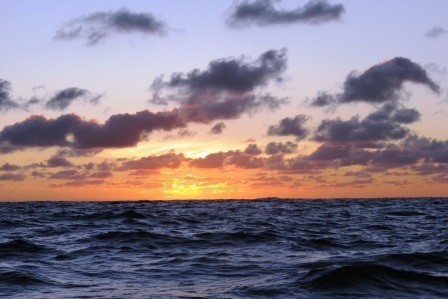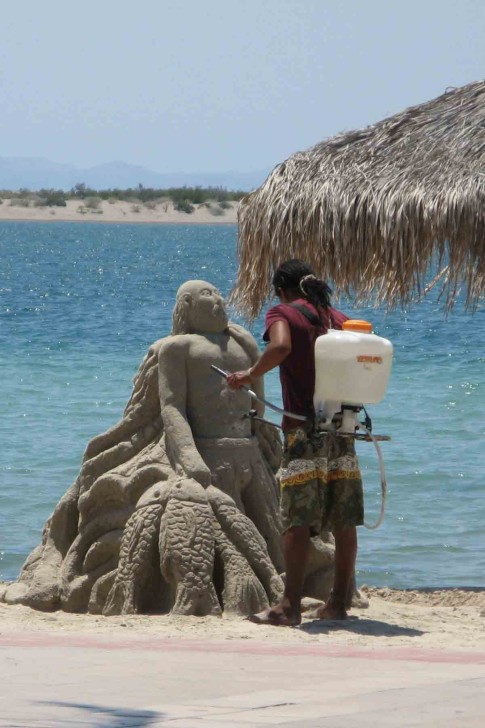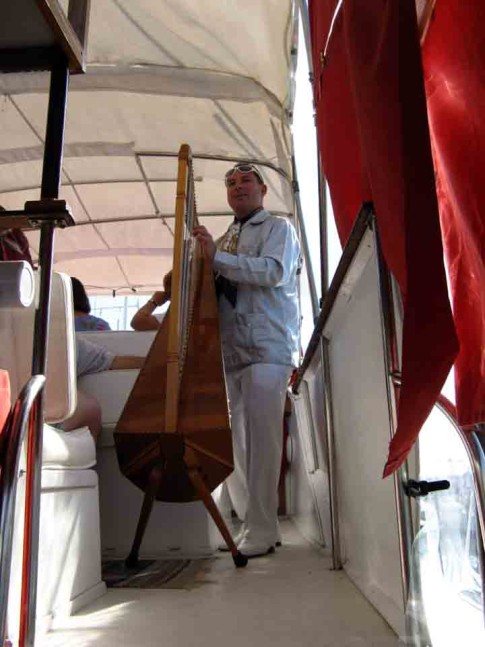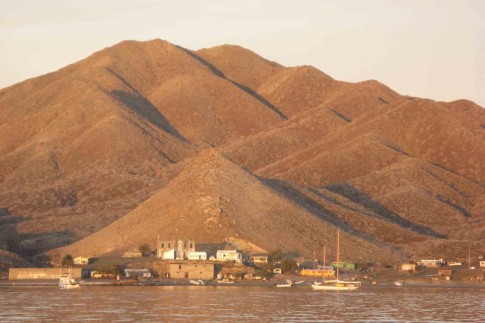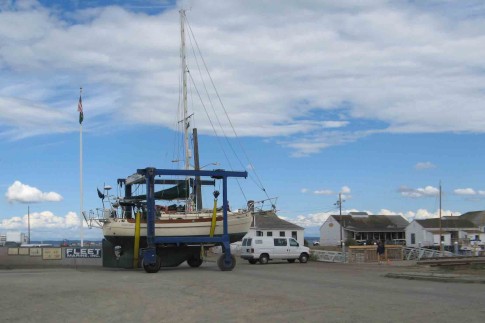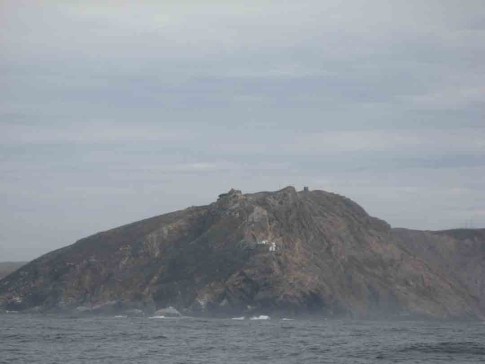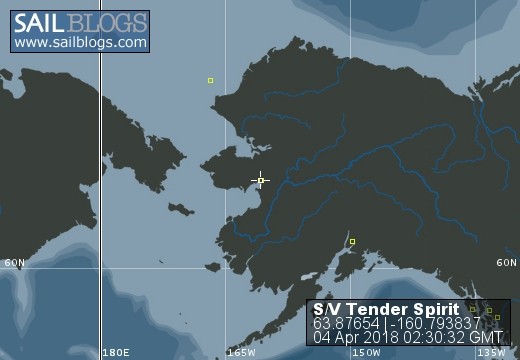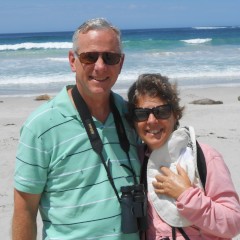
S/V Tender Spirit - Part II
We tried to be landlubbers... it didn’t work out. So, here it begins all over again.
29 January 2019
12 January 2019
09 January 2019
08 December 2018
18 October 2018
03 April 2018 | Unalakleet, Alaska
29 October 2017 | Unalakleet, Alaska
19 July 2015 | Unalakleet, Alaska
30 April 2013 | Point Hope
30 September 2012
04 June 2012 | Haines
03 June 2012
20 April 2012 | Anchorage, Alaska
17 April 2012 | Anchorage, Alaska
17 April 2012 | Anchorage, Alaska
10 January 2012 | Opua, New Zealand
24 December 2011 | Opua, New Zealand
03 December 2011 | Opua, New Zealand
04 November 2011 | Off shore: Destination New Zealand
02 November 2011 | Off shore: Destination New Zealand
2010 Gear Review
01 January 2011
Gear Review for 2010
We did a variety of upgrades, repairs and replacements in New Zealand. If you are contemplating a refit, it is definitely a great place and very cruiser friendly. The workmanship is first rate, products both domestic and international are widely available, and the prices are fair.
Rigging:
Our primary focus was the rigging. The standing rigging was in dire need of replacement. We had swaged fittings but wanted to switch over to stay-loc or high mod. Our original plan included pulling the mast so that we could also update some of the wiring and relocate the radar dome. That didn’t happen due to our budget. The additional cost didn’t make sense when we had some other high priority projects. Northland Rigging out of Opua and Whangarei did a first rate job on the rigging. The riggers were quick to teach me how I can replace the wire down the road so they weren’t “stingy” with their knowledge. When we set up the times for work, they were spot on time, actually early, which was so appreciated. When the project was completed the cost was exactly as estimated, and they included all their measurements so that we can easily replace parts later. We did use the New Zealand brand of stay-locs. They were about half the cost of American brands. We talked to other cruisers and locals and everyone was happy with the Kiwi version. Now that we have given a year of use, so are we. So this is the happy story about how things are supposed to go.
While we were in the land of marine gear, we replaced a number of lines including lapper, staysail sheets, flag halyards, and assorted other lines including spare line for the wind vane steering. The line was pricy, but of good quality. We hadn’t seen good line since leaving the states. I think we over-killed a bit as it seems we have spares of spares now!
Engine:
We had some engine issues that needed resolved. Our exhaust system was disintegrating before our eyes. We also had some interesting new vibrations going on and I could swear that the engine itself had moved. Well, it had. We broke three engine mounts! So we replaced all the engine mounts and a brand new exhaust system. We had the work done by the Yanmar shop at Riverside Drive Marina where we were staying for the season. Once again, the Kiwis were great to work with. The estimates were spot on, the workmanship great, and they were always around to answer questions and help us out with other projects including fixing our little compressor for our diving “hookah”. As of today, everything is working great that they worked on. Oh, one other thing to note… When we were off shore with that fuel issue, we contacted them through another cruiser for some advice. Once again, helpful and caring.
Sails:
We had some chafing issues on the lapper foot. Another cruiser recommended Caliber Sails at Whangarei. They added a heavier vinyl like material along the UV cover. This has worked out great. Scott also went through all of our sails and reinforced any chafed or worn areas. When the roller furling and stay was replaced, and tuned correctly, it was about an inch shorter so the stropping on the sail needed to be shorter as well. We called Scott at Caliber for some advice. He told us that it would be better to take it to his shop to shorten it and then sew it properly. He then said he would stop by and take a look at it. Well, I assumed that he would be around sometime during the day. I was amazed when he was there in 15 minutes! He measured and hauled the sail back to the shop. I guess it was less than an hour and Scott was back. He had it altered and ready to go. It fit perfectly and he charged us only $50NZ!
Anchor
We had a slight problem with our anchor arsenal. We had two CQR anchors and one little fortress for the stern. The CQR sometimes would drag on us. We decided that we needed another primary anchor to use instead of more of the same. I did some research and really wanted to try a Manson Supreme. When we arrived in Opua, we actually won an anchor in a drawing. It was of European style that we did not recognize, sort of a combo plow, Manson. The welding shop in Opua made them. We were ecstatic, but I was still hoping we could come up with the Manson. Well, we splurged and it now is our primary anchor. We used it all the way to the Marshalls in mostly sand. It stayed in place even in Funafuti where we constantly battled a swell. We are pleased with our updated anchor. The anchor that we won is stashed as a spare. We sold the smallest CQR, and have the old primary CQR as a secondary. We have an extra 20 pounds on the bow, but we sleep much better now.
Power management
We arrived in New Zealand with those useless Mexican batteries. We are pretty certain that we were taken for a ride, selling us old used batteries because they never did charge correctly. Our battery box was originally designed to hold 6-golf cart batteries. The previous owner had replaced them with 2-8D’s providing the boat with a maximum 330amp hrs. There was wasted space in the box…just air, so we decided to go back to golf carts. We now have 660 amp hours. The change has been amazing. We always have power. Our power needs are finally well balanced. We seldom use the boat engine for charging. Between the solar panels and wind generator we are able to generate all of our own power except on those windless cloudy occasions. We feel like we have finally nailed down our power issues. The only improvement that we would like to do now is to move the radar dome to the mast. Right now it is on the stern arch and shadows the solar panels.
E-book
I mention this because I finally broke down and bought Amazon.com’s Kindle. It has been a huge success. We must have taken 50 pounds of paperback books off the boat, most of them hand-me-downs. I wrote a complete review of this handy gadget for Seven Seas Cruising Association. I don’t want to repeat myself here, so join the association and read the article. Just let me key you in that it was definitely our most favorite piece of new gear, and won our “gear of the Year” choice for Tender Spirit.
Other added or replaced items that we completed in New Zealand or Fiji:
On going varnishing: I am using Schooner Tropical from International. It is lasting about the same as the other brands and mixes. Nothing spectacular.
Bottom paint: Our bottom paint and sealing job still looked great when we hauled the boat in New Zealand. We are quite pleased with that project. I was just underwater and the paint we added in New Zealand is still doing well.
Prop Speed: We tried this product on our propeller during our haul-out in New Zealand. It sure worked nice. It is just now starting to collect creatures. I am hoping we can touch it up when we go back to Fiji this year. This has been our least fouled year
I am slowly sewing new interior upholstery. This is my first attempt. Material in Fiji was so inexpensive it was worthwhile to try it myself. I didn’t finish all the cushions, it is on-going, but I really like the results and am learning a lot! The ultrasuade that I purchased worked out to be about $2US per meter! I really need to replace the foam this year and they will really look nice.
That’s about it for 2010. Oh, we have been continuously impressed with our choice of sails. Carol Hasse sure makes them to last. We could have bought cheap sails, but having the durability of something is important. I cringe at just the suggestion of shipping a sail to a rural overseas port of call, when just getting a small package runs in the neighborhood of $50….not to mention duty that we sometimes have to pay even if it is supposed to be duty free. So, when we are purchasing gear, we also keep the replacement factor in mind. Some brands are easy to find overseas such as Yanmar. We are so thankful that we haven’t had troubles getting engine parts in most marina centered locations.
We did a variety of upgrades, repairs and replacements in New Zealand. If you are contemplating a refit, it is definitely a great place and very cruiser friendly. The workmanship is first rate, products both domestic and international are widely available, and the prices are fair.
Rigging:
Our primary focus was the rigging. The standing rigging was in dire need of replacement. We had swaged fittings but wanted to switch over to stay-loc or high mod. Our original plan included pulling the mast so that we could also update some of the wiring and relocate the radar dome. That didn’t happen due to our budget. The additional cost didn’t make sense when we had some other high priority projects. Northland Rigging out of Opua and Whangarei did a first rate job on the rigging. The riggers were quick to teach me how I can replace the wire down the road so they weren’t “stingy” with their knowledge. When we set up the times for work, they were spot on time, actually early, which was so appreciated. When the project was completed the cost was exactly as estimated, and they included all their measurements so that we can easily replace parts later. We did use the New Zealand brand of stay-locs. They were about half the cost of American brands. We talked to other cruisers and locals and everyone was happy with the Kiwi version. Now that we have given a year of use, so are we. So this is the happy story about how things are supposed to go.
While we were in the land of marine gear, we replaced a number of lines including lapper, staysail sheets, flag halyards, and assorted other lines including spare line for the wind vane steering. The line was pricy, but of good quality. We hadn’t seen good line since leaving the states. I think we over-killed a bit as it seems we have spares of spares now!
Engine:
We had some engine issues that needed resolved. Our exhaust system was disintegrating before our eyes. We also had some interesting new vibrations going on and I could swear that the engine itself had moved. Well, it had. We broke three engine mounts! So we replaced all the engine mounts and a brand new exhaust system. We had the work done by the Yanmar shop at Riverside Drive Marina where we were staying for the season. Once again, the Kiwis were great to work with. The estimates were spot on, the workmanship great, and they were always around to answer questions and help us out with other projects including fixing our little compressor for our diving “hookah”. As of today, everything is working great that they worked on. Oh, one other thing to note… When we were off shore with that fuel issue, we contacted them through another cruiser for some advice. Once again, helpful and caring.
Sails:
We had some chafing issues on the lapper foot. Another cruiser recommended Caliber Sails at Whangarei. They added a heavier vinyl like material along the UV cover. This has worked out great. Scott also went through all of our sails and reinforced any chafed or worn areas. When the roller furling and stay was replaced, and tuned correctly, it was about an inch shorter so the stropping on the sail needed to be shorter as well. We called Scott at Caliber for some advice. He told us that it would be better to take it to his shop to shorten it and then sew it properly. He then said he would stop by and take a look at it. Well, I assumed that he would be around sometime during the day. I was amazed when he was there in 15 minutes! He measured and hauled the sail back to the shop. I guess it was less than an hour and Scott was back. He had it altered and ready to go. It fit perfectly and he charged us only $50NZ!
Anchor
We had a slight problem with our anchor arsenal. We had two CQR anchors and one little fortress for the stern. The CQR sometimes would drag on us. We decided that we needed another primary anchor to use instead of more of the same. I did some research and really wanted to try a Manson Supreme. When we arrived in Opua, we actually won an anchor in a drawing. It was of European style that we did not recognize, sort of a combo plow, Manson. The welding shop in Opua made them. We were ecstatic, but I was still hoping we could come up with the Manson. Well, we splurged and it now is our primary anchor. We used it all the way to the Marshalls in mostly sand. It stayed in place even in Funafuti where we constantly battled a swell. We are pleased with our updated anchor. The anchor that we won is stashed as a spare. We sold the smallest CQR, and have the old primary CQR as a secondary. We have an extra 20 pounds on the bow, but we sleep much better now.
Power management
We arrived in New Zealand with those useless Mexican batteries. We are pretty certain that we were taken for a ride, selling us old used batteries because they never did charge correctly. Our battery box was originally designed to hold 6-golf cart batteries. The previous owner had replaced them with 2-8D’s providing the boat with a maximum 330amp hrs. There was wasted space in the box…just air, so we decided to go back to golf carts. We now have 660 amp hours. The change has been amazing. We always have power. Our power needs are finally well balanced. We seldom use the boat engine for charging. Between the solar panels and wind generator we are able to generate all of our own power except on those windless cloudy occasions. We feel like we have finally nailed down our power issues. The only improvement that we would like to do now is to move the radar dome to the mast. Right now it is on the stern arch and shadows the solar panels.
E-book
I mention this because I finally broke down and bought Amazon.com’s Kindle. It has been a huge success. We must have taken 50 pounds of paperback books off the boat, most of them hand-me-downs. I wrote a complete review of this handy gadget for Seven Seas Cruising Association. I don’t want to repeat myself here, so join the association and read the article. Just let me key you in that it was definitely our most favorite piece of new gear, and won our “gear of the Year” choice for Tender Spirit.
Other added or replaced items that we completed in New Zealand or Fiji:
On going varnishing: I am using Schooner Tropical from International. It is lasting about the same as the other brands and mixes. Nothing spectacular.
Bottom paint: Our bottom paint and sealing job still looked great when we hauled the boat in New Zealand. We are quite pleased with that project. I was just underwater and the paint we added in New Zealand is still doing well.
Prop Speed: We tried this product on our propeller during our haul-out in New Zealand. It sure worked nice. It is just now starting to collect creatures. I am hoping we can touch it up when we go back to Fiji this year. This has been our least fouled year
I am slowly sewing new interior upholstery. This is my first attempt. Material in Fiji was so inexpensive it was worthwhile to try it myself. I didn’t finish all the cushions, it is on-going, but I really like the results and am learning a lot! The ultrasuade that I purchased worked out to be about $2US per meter! I really need to replace the foam this year and they will really look nice.
That’s about it for 2010. Oh, we have been continuously impressed with our choice of sails. Carol Hasse sure makes them to last. We could have bought cheap sails, but having the durability of something is important. I cringe at just the suggestion of shipping a sail to a rural overseas port of call, when just getting a small package runs in the neighborhood of $50….not to mention duty that we sometimes have to pay even if it is supposed to be duty free. So, when we are purchasing gear, we also keep the replacement factor in mind. Some brands are easy to find overseas such as Yanmar. We are so thankful that we haven’t had troubles getting engine parts in most marina centered locations.
Gear Review
01 January 2010 | Whangarei, New Zealand
A gear review is always a great time to reflect on how our boat is performing. We always evaluate our gear, and prioritize the repair of existing gear and if it is worthy of taking up space. We always think also how to improve the boat whether it be performance or just plain comfort and enjoyability. There will always be that must have item on the list to save for, and of course the never ending project list of stuff that needs to get done.
This year really put to test how all of our systems performed both off-shore and in remote anchorages. There weren't too many surprises, and we are pleased to report not many broken parts.
Basic Boat Performance:
Tender Spirit is definitely not a speedy boat. We have to remind ourselves that we are only a 33 foot boat, and most of our cruising friends are on much larger vessels or catamarans. Therefore, we usually travel a bit slower. Our off shore passages when averaged out over the year showed that we can usually plan on covering about 100 miles per 24 hours. This figure takes into account those times when we had very little wind or no wind making very little progress. It also included times when we motored. Our slowest passage day (24 hour period) was 21 miles when we were becalmed on the passage from Mexico to the Marquesas and we chose not to use the engine. Our fasted day was 142 miles on the passage from the Tuamoto Islands to the Society Islands. When the sailing conditions are right, we can really cover some miles. Our hull speed is 7.2 knots. When we are at hull speed, we tend to have way too much sail out for the sea state conditions. We usually are moving in the 6 to 6.5 knot range when all is going nicely. Motoring along, we can power at lower rpms to maximize fuel consumption. This is great when there is no wind, or light winds and usually can get us moving in the 4 knot range burning about 1.5 liters per hour or less. Sometimes we can add just a little bit of power to the sails so instead of sailing at 3 knots, we are traveling at 5 or 6 knots. The lesson learned this year is if we have fuel, and we can move the boat better, we use it. There is no place for being a purest for the sake of being a purest. Sometimes it makes the difference between making landfall comfortably during the daylight, or trying to get in before dark so we don't have to heave to all night waiting for light. Making speed also means being less subjected to the unpredictable long range forecasts.
We added stainless steel railing to replace our aging life-line wires. We absolutely love it, but the stainless is of a low grade to our total disappointment. We are constantly scrubbing off the rust. . The same goes for the stainless that was used to install our solar panels. It has become a never ending job, but it is still better than the life lines. We really like the added safety and secure hand holds. It's better to grab onto a sturdy rail rather than the shrouds.
We took the bottom down to bare gelcoat. We had a few blisters so they were filled, then a new barrier coat put on and then two layers of bottom paint. When I dove under the boat I hadn't noticed any problem areas. We will get hauled out in February, so that will be a great time to evaluate that project.
A big topic of discussion amongst cruisers is our sail plans. We are all are comparing how different plans are working under different conditions especially on the radio as we are traveling in poor sailing conditions in the company of similar vessel designs. We share ideas and learn a lot from each other. We have found that every boat really does perform differently in similar conditions. And to our amazement, conditions can be way different just 30 miles or less away! We usually always have our main up no matter what. It really adds to stability and cuts down on the rolling. If we are in light, variable type winds in a large swell, a reefed main is definitely a big help. Even when motoring, having that main up, even if it is really reefed down well, will help keep the boat moving along better and more comfortably. Our lapper is the speed demon. Even a little bit out in bad conditions will add greatly to our speed. Our Staysail is the awesome sail that keeps us moving and comfy in windy, nasty weather. It is usually our "heave to" sail of choice when we are waiting for daylight. We will also use lapper heavily reefed for the same purpose depending on wind and sea state. The big thing when heaving to is keeping the sails or sheets from chafing on the shrouds. It is always "happy times" when all three sails are up and drawing nicely in perfect seas and wind conditions. Unfortunately this last year it was a very rare occasion. By the way, we got very little use from the asymmetrical spinnaker. We had it out only a couple of times. It may be great for light winds and small seas, but when there are big swells or puffy wind conditions, it collapses and fills putting a lot of stress on the rigging.
Sails
Our sails performed quite nicely this year. We had some chafe along the foot of both the staysail and lapper UV covers. The lapper chafed on itself when we had it poled out in light winds. The lapper sheets can cut into the rolled up staysail in a hurry if we aren't careful when we tack through. After arriving in New Zealand and visiting with other cruisers, we are not alone in this problem. It is the most common complaint on our sails. The good news is that cruisers have found a workable fix. The solution is adding a bit of vinyl coated canvas type material along the foot of the uv covers. Cruisers that did this said it really helped. It was an inexpensive fix, so we will see how that works out on our next passage. Our main also had a bit of chafe where it pinched when we had it reefed. We added a bit of chafing protection to those areas as well. Other than that, our sails pulled through in great shape.
Rigging:
Our wire is old, probably original. It held up though. We replaced it and the project just now concluded. We added a Stayloc type fitting that is made in New Zealand. The cruisers and riggers have reported great success, and it is half the price, so we went with what works. Our running rigging lines did well. There was some chafe, but nothing beyond the usual wear and tear. We will end for end the halyards this year, and maybe replace a couple of sheets.
Canvas:
Our canvas is in serious need of repairs and replacement. That will have to wait until next year though. I will patch it up some more until we can scrape the funds together. Our project this year is to develop a rain catchment system using our canvas. I replaced the sail cover zipper in 09', and it didn't last and has to be replaced again. UV damage, and who knows what. It was a specialty zipper from Sailrite, I am planning on using some Velcro this year, and hopefully a new cover next year. The sun is merciless on canvas and also any flapping from the wind just shreds it to pieces off shore.
Electronics
Our most favorite piece of gear is the single sideband radio. We have an Icom 710. It performed great and it became the most enjoyable item as well. It provides us with communication with other cruisers as we shared information about everything from current weather conditions, getting through reef passes, anchorages, customs information, and even and especially emergency situations. We also loved the radio because we could send emails, blog updates and retrieve specific text versions of web pages. We can also retrieve text weather and grib file weather reports. The only drawback to this great tool, is the power it uses. It and the refrigerator are our biggest power consumers. Transmitting n uses between 15 and 30 amps so we try to limit our radio use. New this year was getting my amateur radio license. I studied and am now a ham extra. This has really paid off because of the additional frequencies we have access to for data communications and also being able to use the ham nets.
Our VHF radio is an Icom, and it held up well, but the range is very small. I expect we have an antenna or corrosion issue with the cable. We used it only in anchorages with communications between boats and with officials.
Radar. We only had it on a few times this year, mostly at night during poor weather to keep a look-out for other vessels. We did find it handy to keep tabs on our distance from land at night. We have a small Furuno 24 mile range radar. It has given us no problems, thus far.
Garmin Plotter. Well, it is great, but it is old and we do not have specific blue charts for the areas that we are now cruising in because of the cost, and if we buy the chart, it will be useless on a newer machine. It quit working suddenly in the middle a passage. Another cruiser dug into it, and managed to get it working again, but it is giving us signs that it will soon fail. This plotter sits outside in the cockpit. I love it because it is easy keep track of our progress, speed and direction. But it is a real pain to plot a course with. When it fails we need to have something else in place and that decision is a hard one because it will determine our electronic charts....which are generally expensive and limited in range, oh and nontransferable to other systems. The e charting is great, but a huge budget buster. We are leaning heavily on our paper charts for piloting. We aren't ready to invest thousands into a new system that a company will then make obsolete in just a couple of years. When the plotter died, it was sure nice having our hand held GPS for back-up. We actually have two. I thought it was overkill, but one decided not to work, so we were down to 1 gps, 175 miles off-shore. It pays to have a back-up plan for critical pieces of gear.
Autopilot: We have an Autohelm. It is old and we can no longer get parts. It quit on us in the Cook Islands. We didn't miss it much since we have a Monitor Wind vane, which is a great piece of gear. We use the Monitor 95% of the time. It is our most valuable item in our opinion on a passage excluding the sails of course. It worked flawlessly across the Pacific. We did loose one of the vanes in heavy seas and wind one night, so having an extra on board was a Godsend! Nothing wears us out quicker than having to hand steer. It should be noted though that the wind vane doesn't work if there is no wind. That is when the Autohelm really does well. We had light winds on our passage from Tonga to New Zealand and did quite a bit of hand steering so the Autohelm was dearly missed. We did get it going again with the help of another cruiser. We highly recommend having both wind vane and an electronic autopilot on board because the complement each other so nicely. Once again, a back-up plan was very nice.
Other electronics:
I still love my ipod. It is great entertainment on night watches. I would like to get more audio books for it.
The flat screen tv is holding up amazingly well. The DVD part broke, probably corrosion. We couldn't use it anyway with any DVD purchased outside of the US. We bought a multi regional player in Mexico, and that has been great. It will work for all regions. When we are hungry for a movie, and need power for other things, we fire up the generator and have movie night at the anchorage.
Laptop computer: It is becoming a truly important piece of gear because it connects us to the SSB for data communications, we have e charting through Nobeltec (that will change when we decide how we want to restructure our echarting system), and we carry many reference guides and information passed on to us from other cruisers or information we have researched on line. It is amazing what we can accomplish in the way of paperwork with the computer and a wifi connection! We do all of our banking and bill paying on line along with ordering parts and pieces. We even electronically file our taxes. This has sure has been a godsend in places where regular mail is very slow, or non-existant. The bad news is that the computer is our weakest, most fragile piece of gear. We hope to make them last two years. Between corrosion and the shaking up they get while we are off shore, and they heavy use we subject them to, its amazing they do so well. The good thing, is that they have come way down in price, and so far, are readily available in most places. Having a really good high db antenna is important for picking up wifi signals in an anchorage. We picked one up at Tahiti and it made a huge difference. It didn't last however, as it got dropped too many times. It was quickly replaced in New Zealand.
Electrical
Honda 2000 generator: this is a worthwhile piece of gear, and worth the extra space and weight on board. It is so nice to be able to power it up and use 110 volt devices, and charge the batteries if necessary. We will also use our small battery charger that charges household batteries.
Those rechargeable batteries:
These are a mixed can of worms for us. The charge does not hold for very long, so sometimes we go through them like crazy. They are good though in that we have a few devices such as small LED lights that if we forget and leave them on, we aren't going through a bunch of batteries. The same goes for the little multi-band radio. We can get a couple days worth of music/news off of one set of AA's. That little radio by the way has gotten a lot of use. It is so nice to be able to listen to local radio stations.
House Battery bank:
We replaced our two 8D house batteries in Mexico with US batteries purchased locally. They got us here, but it was a bad deal. They are mostly dead, and must be replaced before we leave New Zealand.
Air Breeze Wind Generator:
We love it. Now when the wind blows in the anchorage making life uncomfortable, we think...Yippie, more amps! The wind generator starts generating at 6 knots of wind, and the more it blows, the more amps we get. It is great when we are traveling, and complements the solar panels quite nicely since it will work in the dark and on cloudy days. The only drawback is the interference it causes when we are using the single sideband. The wind generator has to be turned off while we are receiving or transmitting.
Solar Panels:
We added two 120 watt solar panels in Mexico. We love them, and they are the true work horses for generating power especially in the tropics and in New Zealand where the sun is very strong. The only trouble we have is a shadow from the radar. We want to move the radar to the mast. Sounds simple, but we need to get the bracket (easy) new cable, (harder) and run it all up the mast where there may not be room for it with the other cables already there (difficult). It will probably happen later this year, for sure next year.
Between the solar panels and the wind generator, we can usually keep our house batteries charged up. Sitting at anchor for a month is no problem. On occasion we will have to run the engine. Our biggest electrical draw is the SSB, especially when we are getting weather and email. The next big draw is believe it or not....our running lights. We want to replace then with LED, but that will be in a year or so. Radar is very power hungry so we usually run the engine when we need to use it. Refrigeration is not too bad. We opted for a small Engel. Sometimes it is too small, and it is either refrigerator or freezer, but not both. There are times when we wish for a freezer, but that is how it goes. The Engel draws 2.4 amps on its lower setting.
The most frustrating part about traveling is the fact that on an international scale, voltage systems are not uniform. Sometimes it is only a matter of the correct plug adapter, others, it requires a lot more work. In New Zealand, it is 240 volts. When the sander died, the new sander would work, but at half speed. We ran an extension cord from the dock and that was a good solution until we can replace it with a 110 volt version. For some things we wound up buying a small 12 volt inverter and that has worked out quite nicely.
Engine
The Yanmar gave us virtually no problems clear across the Pacific. The only thing that broke was the fresh water pump. The engine overheated just as we were dropping the anchor at Manihi Atoll. With help from another cruiser, and having a spare on board, we were good to go within a couple of hours. We are really good about doing routine oil and fuel filter changes and keeping a close eye out for problems. We feel quite lucky to not have any problems.
Stove:
Our stove has been slowly rusting out, but worse yet, we found that it is really designed for rv's. Although it is gimbaled, the edges had virtually no fiddles, making it a nightmare keeping pots and pans from flying across the boat. We have both burned ourselves now, so it is high on the "to be replaced" list. Hopefully that will happen before we leave New Zealand. As most things, it's mostly a matter of money!
Anchoring:
We had two CQR anchors on the bow, one 45lbs, the other 35lbs. We also carry a small Fortress anchor for the stern. Overall, it worked out OK, but we didn't like having the same style anchor as a second choice. We needed another style for different bottom situations. The CQR does not perform so well in some situations. We did some research, and decided to purchase a Mason "supreme" model anchor. Cruisers have had excellent results with them and we liked what the results of the testing that was done. When we arrived at Opua, we won a similar anchor, but with some major design variations, so now we are heavy on the anchors. We will use the new Mason as our primary anchor, the old 45lb CQR as a secondary. We may sell the other new anchor, and we will use the smaller CQR for a back-up when double anchoring in tandem.
We carry 300 feet of chain for our main anchor. We used this exclusively because of the coral. We set up a snubber off the bowsprit that really helps keep the chain off the bob stay, and cuts down on the jerking when the seas kick up. The secondary anchor has 20 feet of chain and over 300 feet of rode. We also have 300 feet of rode for back-up stashed in a locker for whatever need we run into. We haven't used it yet, but we both feel it was a worthy investment since long lines are often needed for med mooring, or a line to the beach if needed. Our snubber line really took a beating since it was also used for the Med. Mooring. It chaffed badly against the rock quay in Rarotonga in spite of the chaffing gear we had. The north winds that blew into the harbor had us all on edge with 4 foot seas, and fender to fender boats.
Dinghy:
We have a Portland Pudgy dinghy with a 2hp Honda outboard. Both performed well. Having a hardshell dinghy was sure nice around the coral beaches. I also like to row it. The only thing we hate is taking it on and off the boat. The outboard had no breakdowns.
Well, this is about it for our gear this year. As I was reading through the report, I realized how much cruisers help each other. We really don't do this in isolation. We hang out together in anchorages, visiting, swapping tales, and helping each other solve problems. Sometimes it's just a bit of advice, or lending a hand. Other times we can help by having a badly needed part on board to help someone out. We did just that, a thousand miles off shore. Another cruiser had a part break on their Monitor windvane. We had the spare they needed, so we did some navigational magic, met up and passed the part to them. So, it does pay to have spares on board. If we don't use it, it could be a life saver for another cruiser!
This year really put to test how all of our systems performed both off-shore and in remote anchorages. There weren't too many surprises, and we are pleased to report not many broken parts.
Basic Boat Performance:
Tender Spirit is definitely not a speedy boat. We have to remind ourselves that we are only a 33 foot boat, and most of our cruising friends are on much larger vessels or catamarans. Therefore, we usually travel a bit slower. Our off shore passages when averaged out over the year showed that we can usually plan on covering about 100 miles per 24 hours. This figure takes into account those times when we had very little wind or no wind making very little progress. It also included times when we motored. Our slowest passage day (24 hour period) was 21 miles when we were becalmed on the passage from Mexico to the Marquesas and we chose not to use the engine. Our fasted day was 142 miles on the passage from the Tuamoto Islands to the Society Islands. When the sailing conditions are right, we can really cover some miles. Our hull speed is 7.2 knots. When we are at hull speed, we tend to have way too much sail out for the sea state conditions. We usually are moving in the 6 to 6.5 knot range when all is going nicely. Motoring along, we can power at lower rpms to maximize fuel consumption. This is great when there is no wind, or light winds and usually can get us moving in the 4 knot range burning about 1.5 liters per hour or less. Sometimes we can add just a little bit of power to the sails so instead of sailing at 3 knots, we are traveling at 5 or 6 knots. The lesson learned this year is if we have fuel, and we can move the boat better, we use it. There is no place for being a purest for the sake of being a purest. Sometimes it makes the difference between making landfall comfortably during the daylight, or trying to get in before dark so we don't have to heave to all night waiting for light. Making speed also means being less subjected to the unpredictable long range forecasts.
We added stainless steel railing to replace our aging life-line wires. We absolutely love it, but the stainless is of a low grade to our total disappointment. We are constantly scrubbing off the rust. . The same goes for the stainless that was used to install our solar panels. It has become a never ending job, but it is still better than the life lines. We really like the added safety and secure hand holds. It's better to grab onto a sturdy rail rather than the shrouds.
We took the bottom down to bare gelcoat. We had a few blisters so they were filled, then a new barrier coat put on and then two layers of bottom paint. When I dove under the boat I hadn't noticed any problem areas. We will get hauled out in February, so that will be a great time to evaluate that project.
A big topic of discussion amongst cruisers is our sail plans. We are all are comparing how different plans are working under different conditions especially on the radio as we are traveling in poor sailing conditions in the company of similar vessel designs. We share ideas and learn a lot from each other. We have found that every boat really does perform differently in similar conditions. And to our amazement, conditions can be way different just 30 miles or less away! We usually always have our main up no matter what. It really adds to stability and cuts down on the rolling. If we are in light, variable type winds in a large swell, a reefed main is definitely a big help. Even when motoring, having that main up, even if it is really reefed down well, will help keep the boat moving along better and more comfortably. Our lapper is the speed demon. Even a little bit out in bad conditions will add greatly to our speed. Our Staysail is the awesome sail that keeps us moving and comfy in windy, nasty weather. It is usually our "heave to" sail of choice when we are waiting for daylight. We will also use lapper heavily reefed for the same purpose depending on wind and sea state. The big thing when heaving to is keeping the sails or sheets from chafing on the shrouds. It is always "happy times" when all three sails are up and drawing nicely in perfect seas and wind conditions. Unfortunately this last year it was a very rare occasion. By the way, we got very little use from the asymmetrical spinnaker. We had it out only a couple of times. It may be great for light winds and small seas, but when there are big swells or puffy wind conditions, it collapses and fills putting a lot of stress on the rigging.
Sails
Our sails performed quite nicely this year. We had some chafe along the foot of both the staysail and lapper UV covers. The lapper chafed on itself when we had it poled out in light winds. The lapper sheets can cut into the rolled up staysail in a hurry if we aren't careful when we tack through. After arriving in New Zealand and visiting with other cruisers, we are not alone in this problem. It is the most common complaint on our sails. The good news is that cruisers have found a workable fix. The solution is adding a bit of vinyl coated canvas type material along the foot of the uv covers. Cruisers that did this said it really helped. It was an inexpensive fix, so we will see how that works out on our next passage. Our main also had a bit of chafe where it pinched when we had it reefed. We added a bit of chafing protection to those areas as well. Other than that, our sails pulled through in great shape.
Rigging:
Our wire is old, probably original. It held up though. We replaced it and the project just now concluded. We added a Stayloc type fitting that is made in New Zealand. The cruisers and riggers have reported great success, and it is half the price, so we went with what works. Our running rigging lines did well. There was some chafe, but nothing beyond the usual wear and tear. We will end for end the halyards this year, and maybe replace a couple of sheets.
Canvas:
Our canvas is in serious need of repairs and replacement. That will have to wait until next year though. I will patch it up some more until we can scrape the funds together. Our project this year is to develop a rain catchment system using our canvas. I replaced the sail cover zipper in 09', and it didn't last and has to be replaced again. UV damage, and who knows what. It was a specialty zipper from Sailrite, I am planning on using some Velcro this year, and hopefully a new cover next year. The sun is merciless on canvas and also any flapping from the wind just shreds it to pieces off shore.
Electronics
Our most favorite piece of gear is the single sideband radio. We have an Icom 710. It performed great and it became the most enjoyable item as well. It provides us with communication with other cruisers as we shared information about everything from current weather conditions, getting through reef passes, anchorages, customs information, and even and especially emergency situations. We also loved the radio because we could send emails, blog updates and retrieve specific text versions of web pages. We can also retrieve text weather and grib file weather reports. The only drawback to this great tool, is the power it uses. It and the refrigerator are our biggest power consumers. Transmitting n uses between 15 and 30 amps so we try to limit our radio use. New this year was getting my amateur radio license. I studied and am now a ham extra. This has really paid off because of the additional frequencies we have access to for data communications and also being able to use the ham nets.
Our VHF radio is an Icom, and it held up well, but the range is very small. I expect we have an antenna or corrosion issue with the cable. We used it only in anchorages with communications between boats and with officials.
Radar. We only had it on a few times this year, mostly at night during poor weather to keep a look-out for other vessels. We did find it handy to keep tabs on our distance from land at night. We have a small Furuno 24 mile range radar. It has given us no problems, thus far.
Garmin Plotter. Well, it is great, but it is old and we do not have specific blue charts for the areas that we are now cruising in because of the cost, and if we buy the chart, it will be useless on a newer machine. It quit working suddenly in the middle a passage. Another cruiser dug into it, and managed to get it working again, but it is giving us signs that it will soon fail. This plotter sits outside in the cockpit. I love it because it is easy keep track of our progress, speed and direction. But it is a real pain to plot a course with. When it fails we need to have something else in place and that decision is a hard one because it will determine our electronic charts....which are generally expensive and limited in range, oh and nontransferable to other systems. The e charting is great, but a huge budget buster. We are leaning heavily on our paper charts for piloting. We aren't ready to invest thousands into a new system that a company will then make obsolete in just a couple of years. When the plotter died, it was sure nice having our hand held GPS for back-up. We actually have two. I thought it was overkill, but one decided not to work, so we were down to 1 gps, 175 miles off-shore. It pays to have a back-up plan for critical pieces of gear.
Autopilot: We have an Autohelm. It is old and we can no longer get parts. It quit on us in the Cook Islands. We didn't miss it much since we have a Monitor Wind vane, which is a great piece of gear. We use the Monitor 95% of the time. It is our most valuable item in our opinion on a passage excluding the sails of course. It worked flawlessly across the Pacific. We did loose one of the vanes in heavy seas and wind one night, so having an extra on board was a Godsend! Nothing wears us out quicker than having to hand steer. It should be noted though that the wind vane doesn't work if there is no wind. That is when the Autohelm really does well. We had light winds on our passage from Tonga to New Zealand and did quite a bit of hand steering so the Autohelm was dearly missed. We did get it going again with the help of another cruiser. We highly recommend having both wind vane and an electronic autopilot on board because the complement each other so nicely. Once again, a back-up plan was very nice.
Other electronics:
I still love my ipod. It is great entertainment on night watches. I would like to get more audio books for it.
The flat screen tv is holding up amazingly well. The DVD part broke, probably corrosion. We couldn't use it anyway with any DVD purchased outside of the US. We bought a multi regional player in Mexico, and that has been great. It will work for all regions. When we are hungry for a movie, and need power for other things, we fire up the generator and have movie night at the anchorage.
Laptop computer: It is becoming a truly important piece of gear because it connects us to the SSB for data communications, we have e charting through Nobeltec (that will change when we decide how we want to restructure our echarting system), and we carry many reference guides and information passed on to us from other cruisers or information we have researched on line. It is amazing what we can accomplish in the way of paperwork with the computer and a wifi connection! We do all of our banking and bill paying on line along with ordering parts and pieces. We even electronically file our taxes. This has sure has been a godsend in places where regular mail is very slow, or non-existant. The bad news is that the computer is our weakest, most fragile piece of gear. We hope to make them last two years. Between corrosion and the shaking up they get while we are off shore, and they heavy use we subject them to, its amazing they do so well. The good thing, is that they have come way down in price, and so far, are readily available in most places. Having a really good high db antenna is important for picking up wifi signals in an anchorage. We picked one up at Tahiti and it made a huge difference. It didn't last however, as it got dropped too many times. It was quickly replaced in New Zealand.
Electrical
Honda 2000 generator: this is a worthwhile piece of gear, and worth the extra space and weight on board. It is so nice to be able to power it up and use 110 volt devices, and charge the batteries if necessary. We will also use our small battery charger that charges household batteries.
Those rechargeable batteries:
These are a mixed can of worms for us. The charge does not hold for very long, so sometimes we go through them like crazy. They are good though in that we have a few devices such as small LED lights that if we forget and leave them on, we aren't going through a bunch of batteries. The same goes for the little multi-band radio. We can get a couple days worth of music/news off of one set of AA's. That little radio by the way has gotten a lot of use. It is so nice to be able to listen to local radio stations.
House Battery bank:
We replaced our two 8D house batteries in Mexico with US batteries purchased locally. They got us here, but it was a bad deal. They are mostly dead, and must be replaced before we leave New Zealand.
Air Breeze Wind Generator:
We love it. Now when the wind blows in the anchorage making life uncomfortable, we think...Yippie, more amps! The wind generator starts generating at 6 knots of wind, and the more it blows, the more amps we get. It is great when we are traveling, and complements the solar panels quite nicely since it will work in the dark and on cloudy days. The only drawback is the interference it causes when we are using the single sideband. The wind generator has to be turned off while we are receiving or transmitting.
Solar Panels:
We added two 120 watt solar panels in Mexico. We love them, and they are the true work horses for generating power especially in the tropics and in New Zealand where the sun is very strong. The only trouble we have is a shadow from the radar. We want to move the radar to the mast. Sounds simple, but we need to get the bracket (easy) new cable, (harder) and run it all up the mast where there may not be room for it with the other cables already there (difficult). It will probably happen later this year, for sure next year.
Between the solar panels and the wind generator, we can usually keep our house batteries charged up. Sitting at anchor for a month is no problem. On occasion we will have to run the engine. Our biggest electrical draw is the SSB, especially when we are getting weather and email. The next big draw is believe it or not....our running lights. We want to replace then with LED, but that will be in a year or so. Radar is very power hungry so we usually run the engine when we need to use it. Refrigeration is not too bad. We opted for a small Engel. Sometimes it is too small, and it is either refrigerator or freezer, but not both. There are times when we wish for a freezer, but that is how it goes. The Engel draws 2.4 amps on its lower setting.
The most frustrating part about traveling is the fact that on an international scale, voltage systems are not uniform. Sometimes it is only a matter of the correct plug adapter, others, it requires a lot more work. In New Zealand, it is 240 volts. When the sander died, the new sander would work, but at half speed. We ran an extension cord from the dock and that was a good solution until we can replace it with a 110 volt version. For some things we wound up buying a small 12 volt inverter and that has worked out quite nicely.
Engine
The Yanmar gave us virtually no problems clear across the Pacific. The only thing that broke was the fresh water pump. The engine overheated just as we were dropping the anchor at Manihi Atoll. With help from another cruiser, and having a spare on board, we were good to go within a couple of hours. We are really good about doing routine oil and fuel filter changes and keeping a close eye out for problems. We feel quite lucky to not have any problems.
Stove:
Our stove has been slowly rusting out, but worse yet, we found that it is really designed for rv's. Although it is gimbaled, the edges had virtually no fiddles, making it a nightmare keeping pots and pans from flying across the boat. We have both burned ourselves now, so it is high on the "to be replaced" list. Hopefully that will happen before we leave New Zealand. As most things, it's mostly a matter of money!
Anchoring:
We had two CQR anchors on the bow, one 45lbs, the other 35lbs. We also carry a small Fortress anchor for the stern. Overall, it worked out OK, but we didn't like having the same style anchor as a second choice. We needed another style for different bottom situations. The CQR does not perform so well in some situations. We did some research, and decided to purchase a Mason "supreme" model anchor. Cruisers have had excellent results with them and we liked what the results of the testing that was done. When we arrived at Opua, we won a similar anchor, but with some major design variations, so now we are heavy on the anchors. We will use the new Mason as our primary anchor, the old 45lb CQR as a secondary. We may sell the other new anchor, and we will use the smaller CQR for a back-up when double anchoring in tandem.
We carry 300 feet of chain for our main anchor. We used this exclusively because of the coral. We set up a snubber off the bowsprit that really helps keep the chain off the bob stay, and cuts down on the jerking when the seas kick up. The secondary anchor has 20 feet of chain and over 300 feet of rode. We also have 300 feet of rode for back-up stashed in a locker for whatever need we run into. We haven't used it yet, but we both feel it was a worthy investment since long lines are often needed for med mooring, or a line to the beach if needed. Our snubber line really took a beating since it was also used for the Med. Mooring. It chaffed badly against the rock quay in Rarotonga in spite of the chaffing gear we had. The north winds that blew into the harbor had us all on edge with 4 foot seas, and fender to fender boats.
Dinghy:
We have a Portland Pudgy dinghy with a 2hp Honda outboard. Both performed well. Having a hardshell dinghy was sure nice around the coral beaches. I also like to row it. The only thing we hate is taking it on and off the boat. The outboard had no breakdowns.
Well, this is about it for our gear this year. As I was reading through the report, I realized how much cruisers help each other. We really don't do this in isolation. We hang out together in anchorages, visiting, swapping tales, and helping each other solve problems. Sometimes it's just a bit of advice, or lending a hand. Other times we can help by having a badly needed part on board to help someone out. We did just that, a thousand miles off shore. Another cruiser had a part break on their Monitor windvane. We had the spare they needed, so we did some navigational magic, met up and passed the part to them. So, it does pay to have spares on board. If we don't use it, it could be a life saver for another cruiser!
| Vessel Name: | Tender Spirit |
| Vessel Make/Model: | Hans Christian 41 |
| Hailing Port: | Alaska |
| Crew: | Joan & Chuck |
| About: | |
| Extra: | There are only two unbendable rules on this vessel: 1. We can change our mind. 2. We can change direction. Everything else is flexible. |
Tender Spirit's Photos - S/V Tender Spirit (Main)
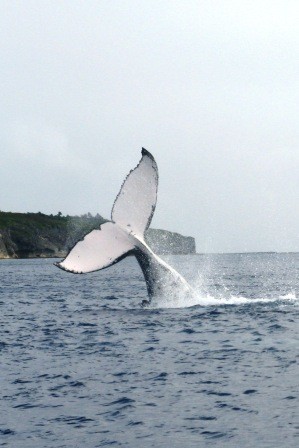 |
This smallest of nations has people with big hearts. Niue is unique in its beautiful caves and chasms. Lush jungles and Humpback whales add to this amazing place.
37 Photos
Created 6 September 2009
|
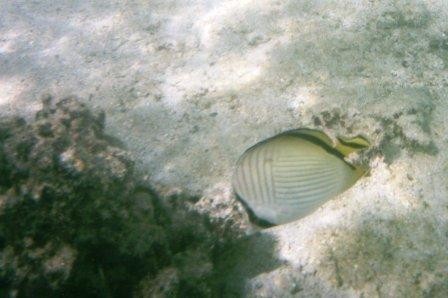 |
My first attempt at using an underwater camera. Photos taken at Moorea.
38 Photos
Created 26 June 2009
|
Adventures of Tender Spirit
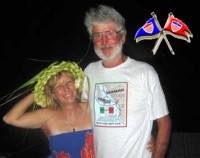
Who: Joan & Chuck
Port: Alaska
Previous Posts
Topics of Interest & Links
- Change of Plans 2017
- 2012 Transitioning back to the Land
- 2011-New Zealand Part II
- 2011 Back to Fiji...Part II
- 2010 Touring Fiji, North to Marshall Islands
- 2010 Northbound from New Zealand
- Gear Review
- 2009 South Pacific-Onward to New Zealand
- 2006-2007 Preparation Posts Before Leaving Alaska
- Cruising Articles
- About Tender Spirit
- 2009 South Pacific Adventure
- 2009 Pacific Crossing
- 2008 & 2009 Mexico Adventure
- 2007 West Coast Adventure
- 2007 Alaska to Washington Passage
- Show All Posts
